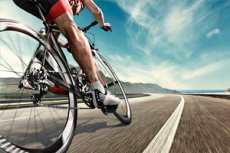New publications
Long sprint intervals increase muscle oxygen uptake better than short intervals
Last reviewed: 02.07.2025

All iLive content is medically reviewed or fact checked to ensure as much factual accuracy as possible.
We have strict sourcing guidelines and only link to reputable media sites, academic research institutions and, whenever possible, medically peer reviewed studies. Note that the numbers in parentheses ([1], [2], etc.) are clickable links to these studies.
If you feel that any of our content is inaccurate, out-of-date, or otherwise questionable, please select it and press Ctrl + Enter.

Physical activities such as running, walking, cycling, and sprinting are known for their ability to engage the musculoskeletal system and result in energy expenditure. Sprint interval training (SIT) is a type of sprint exercise that involves cycles of intense exercise followed by a short period of rest. The structure of the duration of exercise and rest can influence the body's physiological responses to SIT.
In recent years, there has been increased interest in the field of exercise physiology in optimizing SIT protocols. This increased interest has contributed to the recognition of the effectiveness of SIT in improving athletic performance and overall well-being, highlighting its versatility as a tool for maintaining health and fitness.
In an attempt to highlight the benefits of SIT, a team of researchers from Japan, including Dr. Takaki Yamagishi from the Department of Sports Science and Research at the Japan Institute of Sports Science and the Human Performance Laboratory at the Integrated Research Organization at Waseda University, and Professor Yasuo Kawakami, who directs the Human Performance Laboratory and is a member of the Faculty of Sports Science at Waseda University, conducted SIT experiments involving healthy volunteers in a recent study.
The study is published in the journal Medicine & Science in Sports & Exercise.
Explaining the motivation behind his research work, Yamagishi says, “Establishing the minimum training dose required to achieve training effects such as aerobic fitness has been one of my main research interests. Thanks to the support of Professor Kawakami and other co-authors, as well as the collaboration with Waseda University, this unique study using a multi-pronged approach was made possible.”
The research team compared two different sprint interval exercises (SIE) in terms of total sprint duration and sprint-to-rest ratio. They analyzed the effects of SIE on physiological and metabolic responses by examining pulmonary oxygen uptake (V̇O2) levels and tissue oxygenation index (∆TOI) changes in the thigh muscles. They also used magnetic resonance imaging (MRI) with T2-weighted images to assess thigh muscle activation.
The researchers noted that SIE20, which involved two 20-second sprints with 160 seconds of recovery, was superior to SIE10, which involved four 10-second sprints with 80 seconds of recovery. Although both SIE protocols significantly increased total and peripheral oxidative metabolism and core muscle activation, as demonstrated by increases in V̇O2, ∆TOI, and MRI T2 values, respectively, SIE20 achieved greater peripheral oxidative metabolism. They also found that successive sprint repetitions in SIE10 did not correlate with greater oxidative metabolism.

Sprint interval exercise can stimulate beneficial physiological and metabolic responses by activating muscle and increasing tissue oxygen consumption. Source: Medicine & Science in Sports & Exercise (2024). DOI: 10.1249/MSS.00000000000003420
Speaking about the practical application and impact of this study, Yamagishi says, “In today’s fast-paced world, lack of time is a major barrier to regular physical activity. However, the exercises used in our study take less than 15 minutes to complete and provide significant health benefits.”
In conclusion, the results of this study may help fill important gaps in SIT research, such as the effects of minimum sprint duration and repetitions on aerobic and metabolic responses in humans. In-depth research on low-volume SIT may improve training programs and exercise regimens.
Yamagishi adds, “Exercise guidelines from major organizations like the American College of Sports Medicine are updated every five to 10 years, and we hope our study can be part of that process. Future studies on SIE can build on our findings to establish a dose-response relationship between exercise volume or intensity and the extent of training adaptations.”
